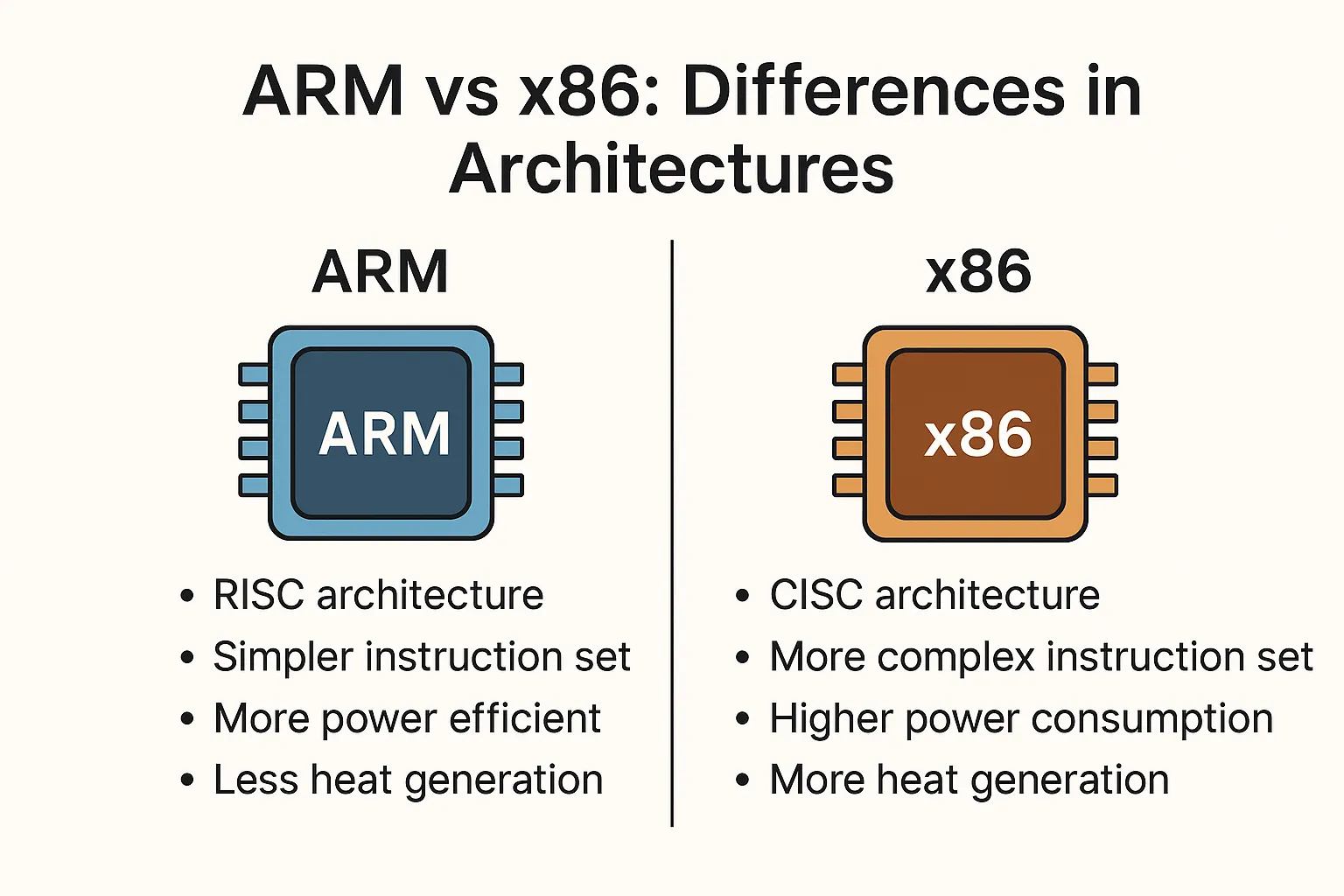The Difference Between x86 and ARM Architectures
Overview of the Key Differences Between Processor Architectures

In modern computing systems, two processor architectures dominate: x86_64 and ARM64. They are widely used in servers, cloud platforms, PCs, and mobile devices. When deploying servers and migrating software environments, the differences between these architectures become critical.
Programs compiled for one architecture are incompatible with the other without recompilation or emulation. This means that containers, disk images, or virtual machines cannot be seamlessly transferred between ARM and x86 systems. Understanding these differences helps avoid compatibility issues and select the appropriate platform for specific tasks.
Key Differences Between Architectures
x86_64 (CISC — Complex Instruction Set Computing)
- Uses complex instructions that perform multiple operations simultaneously.
- Efficient for resource-intensive tasks such as rendering, gaming, and databases.
- Supports a wide range of software, including legacy and proprietary programs.
- Offers high per-core performance but consumes more power.
- Requires active cooling due to high heat output.
ARM64 (RISC — Reduced Instruction Set Computing)
- Employs simple instructions executed in a single cycle.
- Highly energy-efficient with low heat generation.
- Ideal for distributed systems, particularly in cloud environments.
- Scalable, with many cores and specialized units for AI tasks.
- Requires software to be specifically compiled for ARM, which can complicate setup.
Impact of Architecture on Linux Server Deployment
-
Software and Image Compatibility
Programs, containers, virtual machine images, and databases built for x86_64 are not compatible with ARM64, and vice versa. Mixed-architecture clusters require separate builds or multi-platform images. -
Virtualization Limitations
- Virtual machines cannot be migrated between x86 and ARM.
- Docker cannot run images from a different architecture without emulation.
- Kubernetes clusters need special configuration to operate on mixed architectures.
-
Energy Efficiency and Costs
ARM servers are more energy-efficient and require less cooling, reducing operational costs. -
Ecosystem Support
- x86 dominates the Linux ecosystem, especially for proprietary software.
- ARM is rapidly evolving, but not all software is fully adapted.
- Security in Server Environments
- x86: Its widespread use makes it a prime target for attacks. Vulnerabilities tied to its complex architecture require regular firmware and software updates.
- ARM64: Less common in server environments, reducing its appeal to attackers, but limited support for some x86-specific security tools can complicate protection.